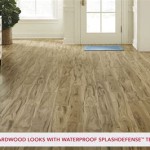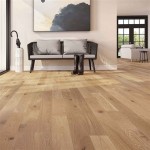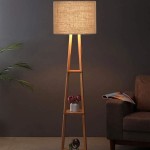Decoding Dark Wood Floor Stain Colors: A Comprehensive Guide
Dark wood floors exude sophistication and elegance, offering a timeless aesthetic that complements a wide range of interior design styles. Selecting the right dark stain, however, requires careful consideration. Factors such as wood species, lighting conditions, and the overall design scheme significantly influence the final appearance. This article provides a comprehensive overview of dark wood floor stain colors, exploring popular options, factors affecting color choice, and application considerations.
The allure of dark wood floors lies in their ability to create a sense of depth and richness within a space. Dark hues can make a room feel more grounded and intimate, adding a touch of luxury and drama. Popular in both contemporary and traditional settings, dark wood floors serve as a versatile backdrop for furniture and decor. The selection of an appropriate stain hinges on understanding the nuances of the color palette and its potential impact on the room's atmosphere.
Understanding the Spectrum of Dark Wood Stain Colors
The term "dark wood stain" encompasses a diverse range of shades, each with its own unique character. Variations in undertones and intensity play a crucial role in the final aesthetic. The following explores some of the most popular dark wood stain color options:
Ebony: Ebony stains are characterized by their deep, almost black hue. This color creates a dramatic and sophisticated look, often used in modern and minimalist interiors. Ebony stains can highlight the natural grain of the wood while simultaneously concealing imperfections. Consideration must be given to the room's lighting, as ebony can absorb a significant amount of light, potentially making a space feel smaller and darker.
Jacobean: Jacobean is a dark brown stain with cool, grey undertones. This color imparts a sense of history and tradition, often favored in more classic or rustic designs. Jacobean stain works well with a variety of wood species, adding depth and character to the flooring. The grey undertones help to balance the warmth of the wood, creating a more neutral and sophisticated look.
Walnut: Walnut stains offer a rich, warm brown hue with subtle red undertones. This color evokes a sense of warmth and comfort, making it a popular choice for living rooms and bedrooms. Walnut stains highlight the natural grain patterns of the wood, adding depth and visual interest. The red undertones can complement warm-toned furniture and decor.
Dark Walnut: A deeper version of walnut, dark walnut provides a richer, more intense brown color. It offers a luxurious and sophisticated feel, suitable for both traditional and modern interiors. The darker shade requires careful consideration of lighting to avoid making the space feel too enclosed. The enhanced depth enhances the inherent woodgrain, creating a visually dynamic surface.
Mahogany: Mahogany stains are characterized by their deep red-brown hue. This color creates a warm and inviting atmosphere, often used in formal dining rooms and libraries. Mahogany stains are particularly effective at highlighting the natural beauty of the wood, adding a touch of elegance and sophistication. The red undertones can create a sense of warmth and richness.
Espresso: Espresso stains offer a dark, coffee-brown hue with subtle warm undertones. This color creates a modern and sophisticated look, often used in contemporary interiors. Espresso stains can conceal imperfections in the wood while adding depth and richness to the flooring. The warm undertones can complement a variety of furniture styles and decor.
Kona: Kona is a dark brown stain with warm, golden undertones. This color provides a balanced and versatile option, suitable for a variety of design styles. Kona stains add warmth and richness to the flooring, creating a comfortable and inviting atmosphere. The golden undertones can complement both warm and cool color palettes.
Beyond these core options, numerous variations and blends exist, allowing for customized color matching. Consulting with a flooring professional is advised to explore these options and determine the most suitable choice for a specific project.
Factors Influencing Dark Wood Stain Color Selection
Choosing the perfect dark wood stain involves considering several key factors. These include the type of wood, the existing lighting, and the desired aesthetic of the room. Ignoring these factors can lead to unsatisfactory results.
Wood Species: Different wood species react differently to stains. Hardwoods like oak, maple, and walnut have varying grain patterns and densities, which affect how the stain is absorbed. Oak, with its open grain, tends to absorb stain more readily than maple, which has a tighter grain. This results in a more pronounced grain pattern with oak. Testing stain samples on the specific wood intended for use is crucial to ensure the desired color and effect are achieved.
Lighting Conditions: Natural and artificial lighting significantly impact how a dark wood floor appears. Rooms with ample natural light can handle darker stains without feeling closed in. Conversely, rooms with limited natural light may benefit from lighter shades of dark stain to avoid creating a cavernous atmosphere. The type of artificial lighting used, whether warm or cool, can also influence the perceived color of the stain. LED lighting, for example, often has a cooler tone, which can affect the undertones of the stain.
Room Size and Layout: The size and layout of the room should also be considered when selecting a dark wood stain. In smaller rooms, darker colors can make the space feel even smaller. In larger rooms, darker stains can help to create a more intimate and defined space. The layout of the room, including the placement of furniture and windows, can also affect how the stain appears. In open-concept spaces, it's important to consider how the floor stain will coordinate with the surrounding areas.
Existing Decor and Furniture: The existing decor and furniture should complement the dark wood floor stain. Consider the color palette of the walls, furniture, and accessories. Dark wood floors can serve as a neutral backdrop for a variety of styles, but it's important to ensure that the colors coordinate effectively. Generally, lighter-colored furniture and decor can provide a pleasing contrast against dark wood floors. Consider also the material of the furniture; for example, the textures of leather or velvet may interact in unexpected ways with different shades of dark-stained wood.
Desired Aesthetic: The overall desired aesthetic of the room plays a crucial role in the stain selection process. Do you envision a modern and minimalist space, a traditional and formal space, or a rustic and cozy space? Different dark wood stain colors can evoke different feelings and moods. For example, ebony stains are often associated with modern and sophisticated designs, while walnut stains are often associated with traditional and warm designs.
Application Considerations and Maintenance
Proper application is critical to achieving a beautiful and durable dark wood floor finish. Thorough preparation, careful staining techniques, and appropriate sealant are essential for long-lasting results. Neglecting these aspects can compromise the final appearance and longevity of the floor.
Surface Preparation: Before applying any stain, the wood floor must be properly prepared. This typically involves sanding the floor to remove any existing finishes, dirt, or imperfections. The floor should be sanded evenly to create a smooth and uniform surface. After sanding, the floor should be thoroughly cleaned to remove any dust or debris. The use of tack cloths can help to ensure that the surface is completely clean before staining.
Stain Application: Stain can be applied using a variety of methods, including brushes, rollers, and rags. The choice of application method depends on the type of stain and the desired effect. When using a brush or roller, it's important to apply the stain evenly and avoid leaving any streaks or puddles. When using a rag, it's important to wipe off any excess stain to prevent the floor from becoming too dark or blotchy. Multiple thin coats are generally preferable to a single thick coat, as this allows for better control over the color intensity.
Sealing and Finishing: After the stain has dried completely, the floor must be sealed with a protective finish. This will help to protect the stain from scratches, stains, and wear. Polyurethane is a popular choice for sealing wood floors, as it provides a durable and water-resistant finish. Other options include varnish, lacquer, and penetrating oil finishes. The choice of finish depends on the desired level of protection and the aesthetic preference. Multiple coats of finish are typically recommended for optimal protection.
Maintenance: Dark wood floors require regular maintenance to keep them looking their best. Regular sweeping or vacuuming can help to remove dirt and debris that can scratch the finish. Periodic cleaning with a wood floor cleaner can help to remove stains and grime. Avoid using harsh chemicals or abrasive cleaners, as these can damage the finish. Applying a scratch concealer or restorer product can help to minimize the appearance of minor scratches and scuffs. Consider using area rugs in high-traffic areas to protect the floor from wear.
Repair and Refinishing: Despite diligent maintenance, dark wood floors may eventually require repair or refinishing. Scratches, dents, and wear patterns can detract from the floor's appearance. Minor scratches can often be repaired with a scratch concealer or touch-up stain. More significant damage may require sanding and refinishing the entire floor. Refinishing involves sanding the floor down to bare wood, applying new stain, and sealing with a protective finish. This process can restore the floor to its original beauty and extend its lifespan.
Selecting a dark wood floor stain involves a blend of aesthetics, technical considerations, and practical maintenance. By carefully considering the wood species, lighting conditions, existing decor, and desired aesthetic, a suitable stain can be chosen and expertly applied. Combining the selection of a quality stain with proper application and diligent maintenance yields a beautiful and long-lasting dark wood floor.

What Color Should I Stain My Wood Floors

2 Ways To Create A Dark Wood Floor Carlisle Wide Plank Floors

Thinking Of Staining Your Hardwood Floors A Dark Color

Favorite Dark Wood Stain Colors Home With Keki

2 Ways To Create A Dark Wood Floor Carlisle Wide Plank Floors

Thinking Of Staining Your Hardwood Floors A Dark Color

Enrich Your Home With Dark Walnut Hardwood Flooring

Dark Hardwood Floors Your Complete Guide

Hardwood Flooring Stain Color Trends 2024 The Girl

Favorite Dark Wood Stain Colors







